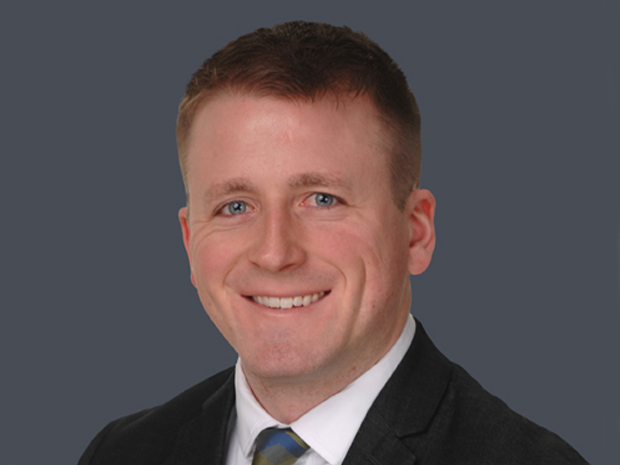On April 9, 2020, the IRS issued Rev. Proc. 2020-24 and Notice 2020-26, which both provided long-awaited guidance for taxpayers anxious to take advantage of the net operating loss (NOL) provisions in the Coronavirus Aid, Relief, and Economic Security Act (CARES Act), enacted March 27, 2020.
The CARES Act added a five-year NOL carryback period and repealed the 80% limitation on losses incurred in tax years beginning after Dec. 31, 2017 and before Jan.1, 2021. NOL carrybacks had been repealed for these tax years under the Tax Cuts and Jobs Act (TCJA). The newly-issued guidance provides clarification regarding the filing mechanics of how and when the following taxpayers can obtain the tax relief granted by the CARES Act.
Although the NOL can be carried back by filing Form 1120X for the carryback years, the quickest way to obtain a refund from an NOL carryback is to request a tentative refund under section 6411. Section 6411 allows taxpayers to apply for a tentative refund related to an NOL carryback on Form 1139 (for corporations) or Form 1045 (for taxpayers other than corporations) to obtain a quick refund. Under section 6411(b) of the Internal Revenue Code (IRC), the IRS conducts a limited examination of the application and makes the resulting credit or refund within 90 days of the filing of the application. Prior to the CARES Act, to carryback a loss on Form 1139 or Form 1045, the form needed to be filed within 12 months of the close of the tax year. For this reason, the CARES Act did not make the filing of the Form 1139 available for losses accumulated in the taxable year 2018.
Taxpayers with NOLs incurred in tax years commencing on or after Jan. 1, 2018
Effective immediately, the IRS granted a six-month extension to the deadline for filing an application for tentative refund for taxpayers who incurred an NOL either during calendar year 2018 or during a fiscal year that ended on or before June 30, 2019.
The CARES Act allows carrybacks up to five years for 2018 losses; however, until Notice 2020-26 was issued, the procedures for carrying back the losses were unclear. Under Notice 2020-26, taxpayers with losses in tax years that began during calendar year 2018 and that ended on June 30, 2019 may carryback NOLs using Form 1139. The IRS has granted a six-month extension of time to carryback NOLs by filing Form 1139. The Notice provides the following example:
For example, in the case of an NOL that arose in a taxable year ending on Dec. 31, 2018, a taxpayer normally would have until Dec. 31, 2019, to file the Form 1045 or Form 1139, as applicable, but due to this relief, will now have until June 30, 2020, to file the Form 1045 or Form 1139, as applicable.
The NOLs are carried back to each of the five taxable years preceding the NOL year, applying the NOL to the earliest tax year in the carryback period, carrying forward unused amounts to each succeeding taxable year.
Guidance was also issued for taxpayers with AMT credits arising either during calendar year 2018 or during a fiscal year that ended on or before June 30, 2019. Taxpayers with refundable AMT credits incurred during these tax periods may elect to carryback the resulting loss on an application for tentative refund (Form 1139 or Form 1045) as long as the application is filed prior to Dec. 31, 2020. However, an application electing to carryback both AMT credits and NOLs must be filed by the earlier of either the NOL deadline or the AMT credit deadline. Therefore, one application claiming both items must be filed by the six-month extended deadline for NOLs incurred either during calendar year 2018, or during a fiscal year that ended on or before June 30, 2019.
Taxpayers filing an application for tentative refund to carryback an NOL incurred during calendar year 2018 or at fiscal-year end June 30, 2019 must:
- Add “Notice 2020-26, Extension of Time to File Application for Tentative Carryback Adjustment” to the top of Form 1139 or 1045; and
- File the form no later than the six-month extended deadline for NOLs incurred either during calendar year 2018 or during a fiscal year that ended on or before June 30, 2019.
Fiscal year taxpayers with tax years beginning before Jan. 1, 2018, and ending after Dec. 31, 2017
Rev. Proc. 2020-24 addresses NOL carrybacks for taxpayers whose fiscal year began before Jan. 1, 2018 and ended after Dec. 31, 2017, that were previously restricted under TCJA from carrying back an NOL. The CARES Act retroactively corrected the previous technicality in the TCJA’s drafting language. As a result, the CARES Act granted fiscal-year filers, inadvertently restricted by the TCJA repeal, to carryback an NOL incurred during this straddle period by filing an application for tentative refund. Form 1139 for fiscal year taxpayers will be treated as timely filed if filed no later than July 27, 2020. This deadline is exclusively available for fiscal year taxpayers who incurred an NOL during this straddle period. The July 27, 2020, deadline is not available for taxpayers with a Dec. 31, 2018, tax year end.
Because the NOL is carried back by default, Rev. Proc. 2020-24 clarifies that fiscal-year filers who incurred an NOL during this straddle period must file an election no later than July 27, 2020, to waive the carryback period, to reduce any carryback period or to revoke certain elections made under section 172(b).
Specifically, fiscal-year taxpayers must file the election by incorporating the following information within the statement:
- Adding “Filed pursuant to Rev. Proc. 2020-24” to the top of the statement;
- Indicating the IRC section under which the election is filed; and
- Naming the election, the tax period and explaining the taxpayer’s basis for making the named election.
The statement, in turn, must be attached to either the taxpayers’ amended tax return, Form 1045 or Form 1139, which only reports the taxpayer’s name, address and taxpayer identification number. The statement and the return, containing limited taxpayer information, should be filed with the Service Center where the taxpayer files its Federal income tax return.
Election to waive carryback for NOLs incurred in tax years beginning in 2018 or 2019
Taxpayers electing to waive an NOL incurred in either tax year 2018 or 2019 must follow the procedures below:
- Prepare a statement for each tax year (2018 or 2019) electing to waive the carryback.
- Include the following language in the statement: “Taxpayer is electing to apply section 172(b)(3) under Rev. Proc. 2020-24 for [insert tax year]” and waive the carryback period.
- Attach the statement(s) to the first Federal income tax return filed for the tax year on or immediately following March 27, 2020.
- File the election(s) for either or both tax years no later than the applicable due date of that Federal income tax return, including extensions.
The election to waive the NOL carryback period is irrevocable.
Net Operating Loss carrybacks and the section 965 transition tax
The Tax Cuts and Jobs Act imposed a one-time transition tax under section 965 on a U.S. shareholders’ share of a specified 10% owned foreign corporation’s deferred earnings and profits. The section 965 transition tax is a one-time tax event, although under the TCJA a taxpayer could spread the tax liability in installments over eight years. In Rev. Proc. 2020-24, the IRS provides guidance on the carryback of net operating losses under the CARES Act and the effect on the section 965 transition tax.
The CARES Act disallows offsetting section 965 income with the carryback of an NOL arising in tax years beginning after Dec. 31, 2017 and before Jan. 1, 2021. Moreover, the Act treats any taxpayer carrying back an NOL to a taxable year with a section 965(a) inclusion as having elected to not take into account such section 965 income in determining a taxpayer’s NOL deduction under section 172. Rev. Proc. 2020-24 makes clear this deemed election under section 965(n) may not be waived. The revenue procedure further clarifies that the deemed election shall only be applicable for purposes of the NOL carryback to the section 965 taxable year and that a taxpayer’s previous election or revocation under section 965(n) will be unaffected.
The Act also provides for a special election to exclude from a taxpayer’s five-year carryback period one or more taxable years in which the taxpayer reported income under section 965. This election may be beneficial to taxpayers who elected to pay their section 965 tax liability as an eight-year installment under section 965(h). Any decrease in tax attributable to carrying back an NOL to a tax year with a section 965 inclusion will first be applied to the next outstanding installment due under section 965(h), followed by each successive installment until the liability is paid in full before the taxpayer receives a refund. By making the election to exclude a section 965 tax liability year from the NOL carryback period, the taxpayer will avoid this offset to its refund related to the 965(h) liability of that year.
Rev. Proc. 2020-24 provides that the election to exclude section 965 taxable years from the carryback period for NOLs arising in taxable years beginning in 2018 or 2019 must be made no later than the due date, including extensions, of the taxpayer’s first federal return for the first taxable year ending after the enactment date of the CARES Act, March 27, 2020. The election for an NOL arising in a taxable year beginning in 2020 must be made no later than the due date, including extension, of the 2020 tax return.
The election is made by attaching a statement to the earliest filed, following the effective date of Rev. Proc. 2020-24 (April 9, 2020), of the following:
- The federal return for the taxable year in which the NOL arises;
- The tentative refund claim, in the case of corporations, Form 1139, carrying back such NOL; or
- The amended federal return carrying back such NOL.
The election must state the following:
- That the taxpayer is electing to apply section 172(b)(1)(D)(v)(I) under Rev. Proc. 2020-24;
- The taxable year in which the NOL was generated; and
- The taxpayer’s section 965 year.
Taxpayers carrying back an NOL by means of filing amended federal returns or tentative carryback claims for carryback period years must attach such statement to each amended return filed. The election to exclude section 965 years from a carryback period is irrevocable once made. Lastly, Rev. Proc. 2020-24 clarifies that section 965 years excluded from the carryback period, by election, must still be accounted for when determining a taxpayer’s five-year carryback period. In other words, the election under section 172(b)(1)(D)(v)(I) does not allow for substituting a section 965 year for the sixth preceding taxable year of the taxpayer.
Consolidated groups
Rev. Proc. 2020-24 makes clear that the elections to forego carrying back NOLs under section 172(b)(3) as well as the election to exclude section 965 years from the carryback period under section 172(b)(1)(D)(v)(I) must be made by the agent of the consolidated group. Generally, the agent is the common parent of the consolidated group (Reg. Sec. 1.1502-77(c)). Moreover, agency is determined annually and is not affected by changes in membership of the consolidated group in later years (Reg. Sec. 1.1502-77(a)(2)). This is significant in the case of a corporation that leaves a consolidated group and now wishes to carryback an NOL to years during which it was a member. The cooperation of the agent(s) of the consolidated group for taxable years in the taxpayer’s membership of the group and five-year carryback period overlap may be required.




